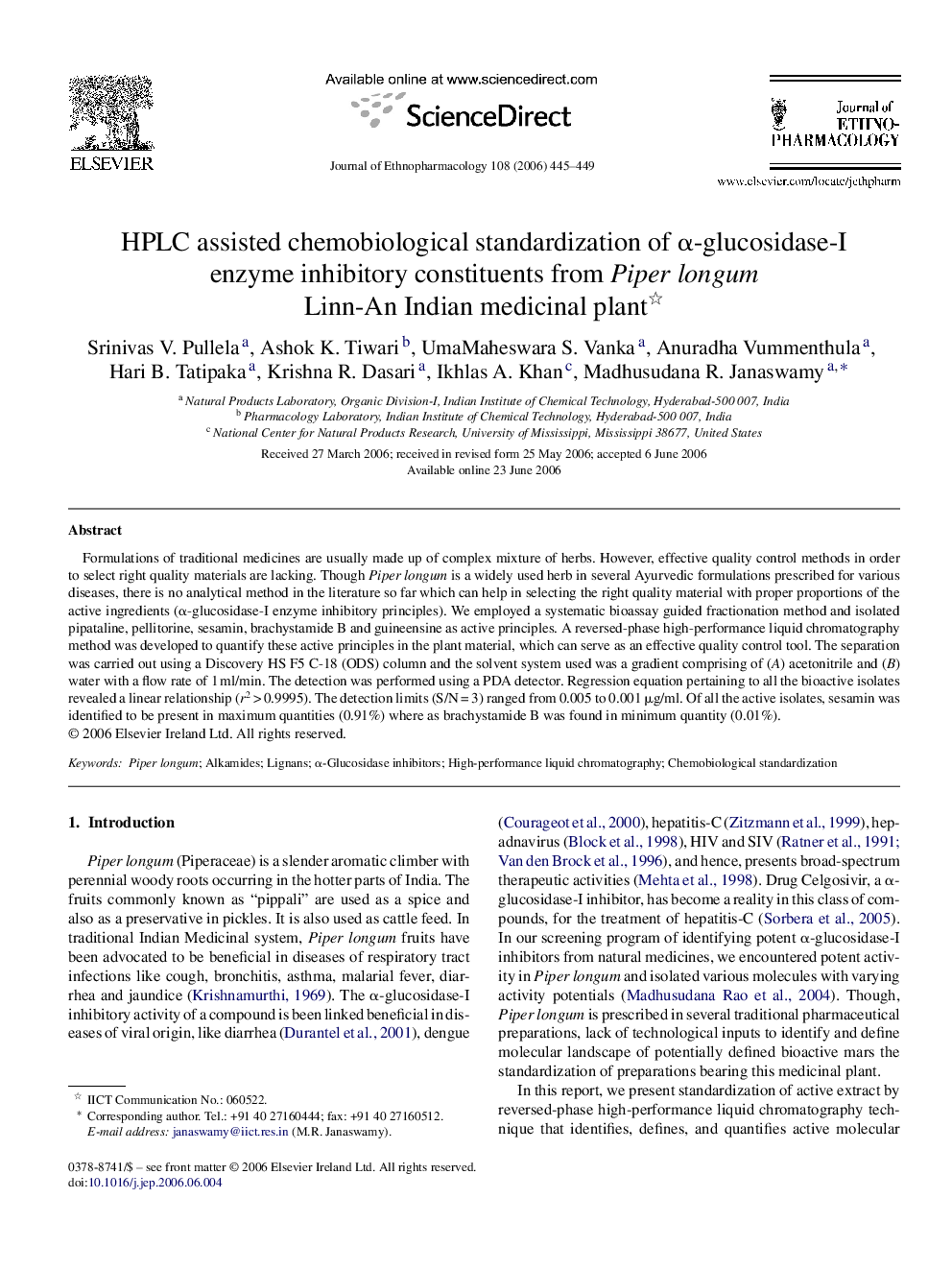| Article ID | Journal | Published Year | Pages | File Type |
|---|---|---|---|---|
| 2547394 | Journal of Ethnopharmacology | 2006 | 5 Pages |
Formulations of traditional medicines are usually made up of complex mixture of herbs. However, effective quality control methods in order to select right quality materials are lacking. Though Piper longum is a widely used herb in several Ayurvedic formulations prescribed for various diseases, there is no analytical method in the literature so far which can help in selecting the right quality material with proper proportions of the active ingredients (α-glucosidase-I enzyme inhibitory principles). We employed a systematic bioassay guided fractionation method and isolated pipataline, pellitorine, sesamin, brachystamide B and guineensine as active principles. A reversed-phase high-performance liquid chromatography method was developed to quantify these active principles in the plant material, which can serve as an effective quality control tool. The separation was carried out using a Discovery HS F5 C-18 (ODS) column and the solvent system used was a gradient comprising of (A) acetonitrile and (B) water with a flow rate of 1 ml/min. The detection was performed using a PDA detector. Regression equation pertaining to all the bioactive isolates revealed a linear relationship (r2 > 0.9995). The detection limits (S/N = 3) ranged from 0.005 to 0.001 μg/ml. Of all the active isolates, sesamin was identified to be present in maximum quantities (0.91%) where as brachystamide B was found in minimum quantity (0.01%).
